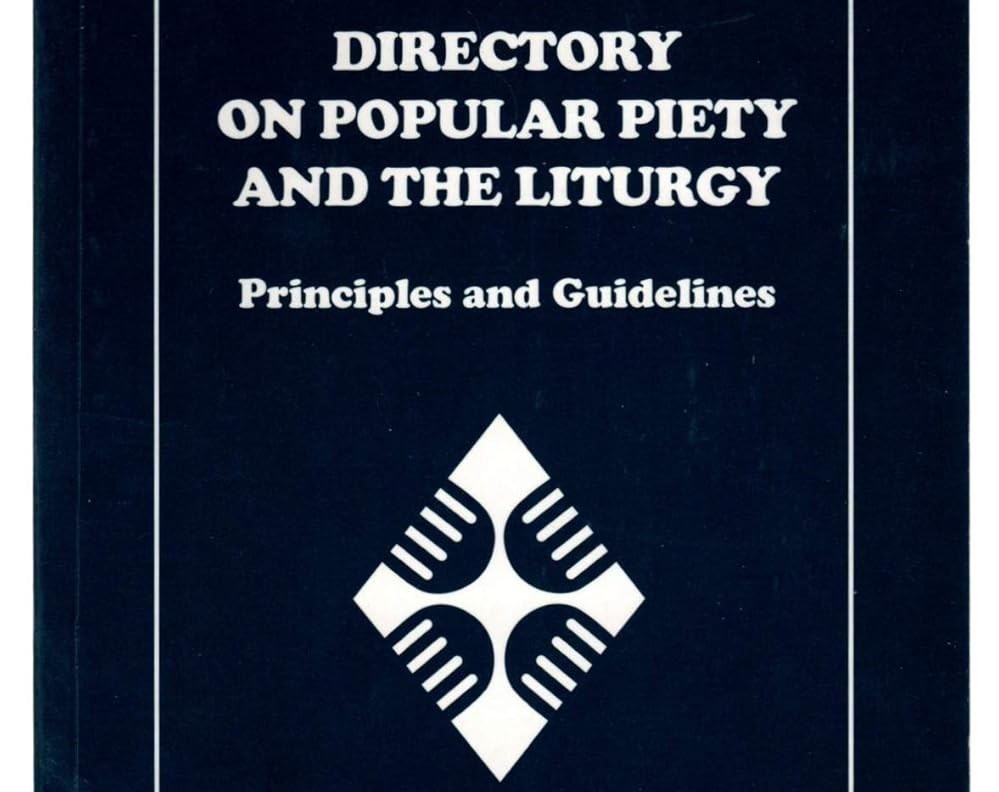Devotions
National Liturgical Council

Over the centuries the major source and expression of worship has always been the liturgical life of the church. The Eucharist is the most important expression of this worship along with the sacraments, blessings and the liturgy of the hours. Other forms of prayer have grown up alongside the liturgy. These are commonly named Popular Piety, Devotions or pious exercises.
Pious exercises include such activities as meditation, lectio divina, bible study or prayer groups, wearing of blessed articles such as medals or the scapular.
Popular piety or devotions includes processions on feast days, Marian devotions, novenas, Rosary, Stations of the Cross, pilgrimages to shrines, litanies, veneration of images or relics of the saints and The Angelus.
In 2002 the Congregation for Divine Worship and the Discipline of the Sacraments issued the Directory on Popular Piety and the Liturgy. This wonderful resource provides principles and guidelines on the relationship of liturgy to devotions. It also details many forms of piety from around the world.
"The term 'popular piety' designates those diverse cultic expressions of a private or community nature which, in the context of the Christian faith, are inspired predominantly not by the Sacred Liturgy but by forms deriving from a particular nation or people or from their culture" (DPPL 9).
Popular Piety & the Liturgy
Devotion of the people of God must always be in harmony with the liturgical life of the Church and lead and prepare the hearts of the people ‘for the celebration of the sacred mysteries’. (DPPL 4)
Devotions happen outside the actual liturgical celebration and always lead to it.
In the past it was common for people to pray their devotional prayer, such as the Rosary, during the Mass, and began when the Mass was not in the language of the people. As we are all called to fully participate in the action of the Eucharist through our silent reflection, responses, gestures and prayer; this practice is now not encouraged.
The development of the liturgy in ancient times was influenced by local cultures and this still continues. However the Directory does not envisage the incorporation of devotions in the liturgy. Rather these are seen as specific to the spiritual life of people which support and lead them to the liturgy.
Devotions should lead the person to the particular focus of the season or feast in the liturgical year. Customs such as Stations of the Cross are most appropriate during Lent. The tradition of celebrations during May for Mary outside the liturgy can lead the faithful to a greater appreciation of the role of Mary in salvation. This could be coupled with the use of the Votive Mass for Mary on Saturdays, when permitted.
Characteristics of Devotions
Devotions need to be characterised by the following qualities: the significance of the resurrection of Christ for salvation; an awareness of belonging to the Church; the person and action of the Holy Spirit; and sacred scripture as a foundation for all prayer.
The following practices are to be avoided:
- Those which place an over emphasis on saints without sufficient reference to Christ
- Those which promote isolation from the church’s sacramental life
- Those which promote interior division between worship and the duties of Christian living,
- Those which risk promoting sects, superstition, magic, fatalism or oppression. (DPPL 64)
All people need spiritual nourishment to keep alive their personal and communal relationship with God and the Church. While the liturgy provides the main nourishment these other appropriate forms of piety keep us in tune with God. We are then better prepared to join with the church in its official worship. Popular piety is an indispensable aid to deepen and mature faith. It is ‘a true treasure of the People of God.’ (DPPL 61)
This article was originally published in ‘Prayer and Devotions’. © Diocese of Parramatta. 2007. Reprinted with permission.
